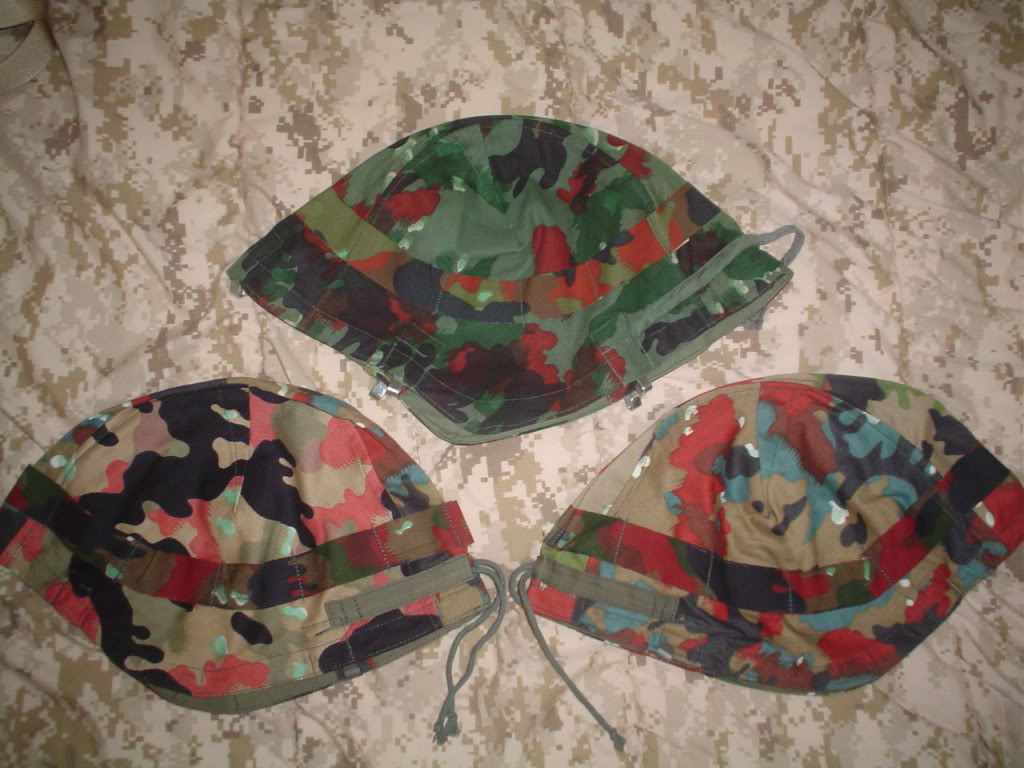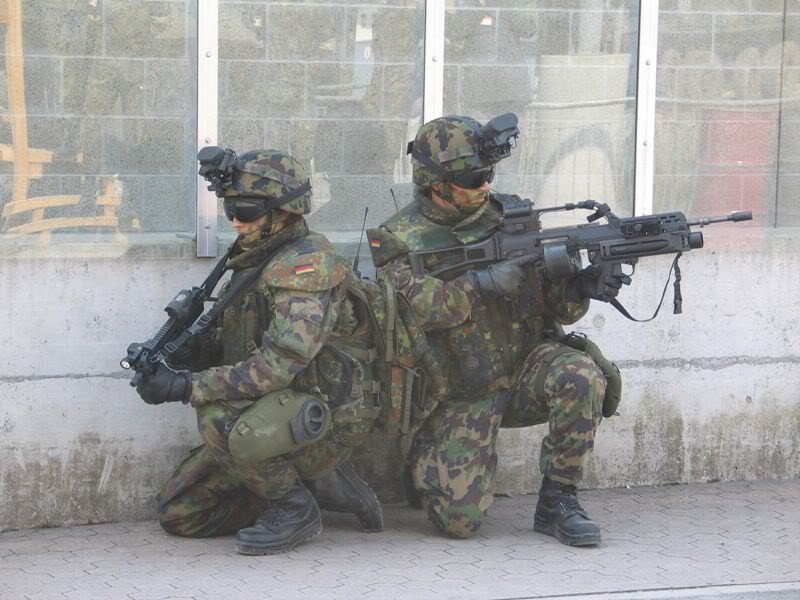Over in this thread we got to talking about different Leibermuster camo copies. I have taken a fairly quick look at my Swiss and Bundeswehr 1954 sets and concluded the following preliminary things:
1. The Swiss used at least four different patterns for their uniforms (and I'm pretty sure even more if you include other garments).
Type A Made from thin canvas and is very similar to BW and WW2 WH pattern. Consists of 6 colors; tan background, red, green, very light green, white, and black. A dark red results from overlaps of red and green, but it's clearly not a separate screen. Typified by small clusters of fairly small white/green dots around the edges of the green and red colors. The "drips" appear to be thinner and less regular than all patterns which follow. Made in the late 1950s and early 1960s.
Type B Heavy twill cotton uniform in the same cut as Type A with only minor differences. Consists of same 6 colors; tan or brown background, red, green, very light green, white. White/green dots are more simple shaped and a little larger, but still mostly clustered around the edges of the green and red colors. Colors are laid out a little more "blobby" vs. the thin tiger stripe effect of all three earlier patterns. Probably used in the 1960s, definitely in the 1970s and at least 1980.
Type C Same as Type B cloth and uniform cut. Consists of 7 colors, 6 as before but with the addition of a light red. Unlike the overlapping red/green of Types A and B, the predominate red is lighter with a darker red blobbed over it in places. There is no major overlapping with the green color, except at the edges where you can clearly see there are three distinct colors being laid down. The white/green dots are not clustered, they are larger, and are out in the middle of the background color as opposed to be clustered around the edges of the greens and reds. Colors are also laid out more "blobby". Definitely used in the late 1970s and early late 1980s (alongside TAZ 82). Not sure about other dates.
Type D Light cotton/polly mix (TAZ82) which overlapped with the earlier, heavier sets until TAZ90 was introduced. Same colors as Types A and B with the reds and greens overlapping and no second red color. Much "busier" pattern with less of the background color showing through. The dots are even larger and less numerous than the other patterns.
2. I've noted at least two variants of Type C where the red and green screens were reversed. This is consistent on a few pieces, but I'd have to look more closely to see if it has any correspondence to dates.
3. The Leibermuster pattern was designed to have the black shapes appear almost randomly so as to reduce repetition. This was achieved by using a smaller diameter roller for the black so it practically never overlaps in the same way. This is not true for Type C. Every matching underlying colored spots I checked had the black in the same exact places. Types A, B, and D are like BW and WH Leibermuster in terms of using the different sized black rollers.
4. Another thing the independence of the black roller allows for is flipping the screen left/right and/or top/bottom. This allows for even more variations in the overall pattern, which increases the camouflage effect overall. I haven't spent enough time to see if they did this with uniform Types A, B, or D, but I know for sure they did it on their shelter/ponchos. Which makes sense since those are supposed to be buttoned together, therefore the more variety the better.
5. There are a lot of color variations amongst the uniforms. The background color seems to be the big one they changed. I don't know if any of these changes correspond with dates, however it is my observation that the lighter based uniforms are earlier and the darker ones are later. Certainly the examples of Type A I've seen are very consistent and have a light tan background and all of the TAZ82 stuff I've seen is quite dark. It also appears that the dark red color fluctuated more than the others. One example the overlap red/green color is almost brown instead of a dark red.
Far more research has to be done than I have time for at the moment. Fortunately, I have about 40-50 pieces of Swiss gear in Leibermuster that I can check over when I do have the time
As a footnote, my brain has always told me that the various Swiss pieces I've handled didn't look the same. I chalked it up to color variations and the fact that with so many pockets, seams, etc. there isn't a lot of opportunity to see large sections to see subtle differences. But after looking at them tonight I've concluded that my subconscious brain is more observant in this case!
Steve



 by
by 

 [/img][img]
[/img][img] [/img]
[/img] [/img]
[/img]







